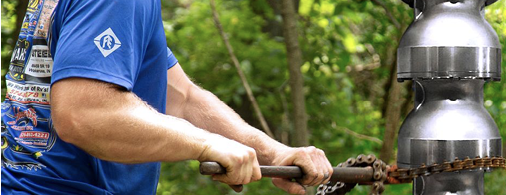How premature motor failures for one of its Pennsylvania customers, causing downtime and raising even more questions, resulted in a solution from Franklin Electric: reliability through equipment optimization.
Water management is a central issue at virtually every mine and facility, active or not, in nearly every corner of the globe. While others suffer from drought conditions, others are simultaneously contending with more water than ever thought possible. Neither are a positive experience for the mine owner, leading to downtime, costly equipment repairs and, often, crucial infrastructure additions and replacements to keep a system optimal.
In 2023, Franklin Electric worked with one of its U.S. clients, Infinity Drilling, to help devise a pumping solution for several wells at a mine water reclamation facility that would be more reliable and allow for greater uptime.

The customer’s challenge
The Pennsylvania treatment plant handled about 4,400 gallons per minute across four wells drilled into old coal mining shafts, each 300-400 feet deep. The facility used submersible turbine pumps with 10-inch, 250- and 200-horsepower competitive wet-wound motors.
The pumps were also controlled by using variable frequency drives (VFD), allowing the facility to vary flow from different wells. However, these motors had several failures, leaving pumps down for weeks at a time, and the plant at less-than-full capacity.
Franklin Electric targeted one well with multiple motor failures that had also created an excessive labor expense for each repair. Working with Infinity, the team determined that the motor failures were due to overheating in the windings. The wet-wound motors were not capable of running less than 55 Hz, and were not optimized to be paired with the VFDs. As a result, the original pumps were over pumping and could not be controlled to vary the flows to the treatment plant as expected.
In short, the facility needed a pump and motor solution that could provide 500 to 1,500 gpm from each well. While the existing pumps were designed to handle the max flow – the wetwound motors were not capable of operating at lower hertz to reduce the flow enough.
Bringing in the pumping fix
Franklin recommended pairing 11-inch FST Series submersible turbine pumps with 8-in., 175- and 200-hp encapsulated motors capable of operating between 30 and 60 Hz. The Franklin encapsulated motors would not only operate more efficiently, saving on energy costs, they would also perform more reliably over the long-haul.
Overall, the 316SS pumping system allowed reclamation of slightly aggressive water as part of the conditions of the application.
The facility was also able to utilize the existing VFDs, saving on costs overall. As a value-added service, Franklin Electric provided additional VFD programming requirements and on-site support at each well retrofit start-up to ensure proper performance and customer satisfaction. In addition to installing the new Franklin motors, the systems also utilized a PT100 temperature sensor on the motor and installed a motor shroud for additional protection against the motors overheating.
Seeing results
The facility benefited from the new system immediately. The smaller motors not only delivered reduced energy consumption, but they also operated more efficiently – allowing the facility to vary flow from each well site to the treatment plant for long-term energy savings.
The wells now operate for optimum performance, meaning greater reliability and no downtime to service the systems. Best of all, the life expectancy of the new system is greater than before – since the motors are VFD-compatible and properly protected by using the required VFD parameters.
“Asking the right questions is the first step in selecting the right pump for your job and sizing a system that will work best for a client’s needs,” Franklin Electric said. To help make that easier and more user friendly, the company has the online tool FE Select, which allows a user to input performance requirements or specs, such as water flow and head requirements, input voltage and other electrical considerations, and generate a quote that includes downloadable assets including performance curves, dimensional drawings and detailed specifications of components.
